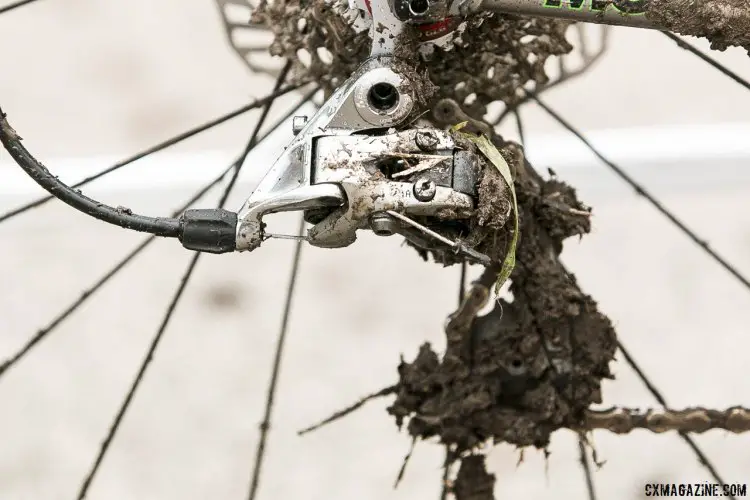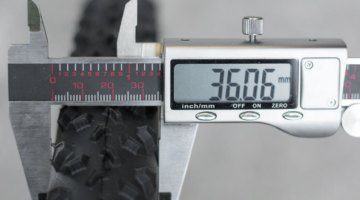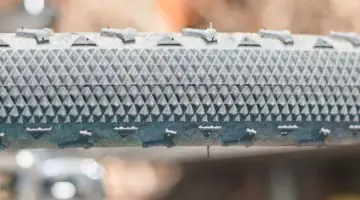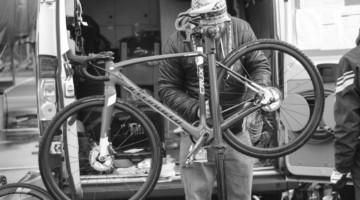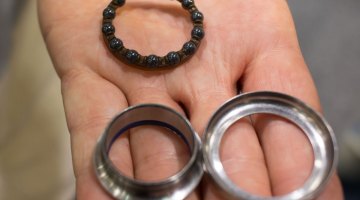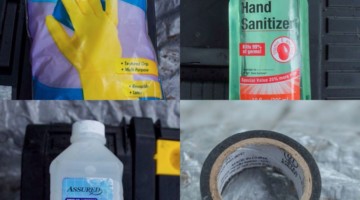The mud of cyclocross and the fine dirt and grit of gravel grinders are not kind to a bicycle’s drivetrain.
In past Mechanical Mondays, we’ve touched on the points of chain and gear wear, including a pre-race bike inspection that can help avoid a nasty mechanical shocker on the race course. Many companies have their own chain wear checkers, which are becoming so popular that they are also being built into multi-tools.
While plenty of tools and guides are designed to gauge and understand chain wear, properly maintaining jockey wheels on your rear derailleur is not as common a subject.
In some aspects, this makes partial sense. After all, if you are having shifting issues during a ride, they are more likely a symptom of the following problems, in order: 1. Poorly adjusted or maintained cables/housing; 2. Misaligned derailleur due to hanger; 3. Worn chain, cassette and chainrings.
In other words, if your chain is skipping around, it is likely not from the cause of worn jockey wheels. However, overlooking these for long periods of time can lead to disastrous results, as we briefly mentioned several years ago in a Mechanical Monday dealing with bike inspection: “…inspect the jockey wheels on the derailleur. They should be clean and spin freely–if they don’t, they’ll need to be overhauled or replaced or you risk breaking your derailleur off the next time it gets caked with mud.”
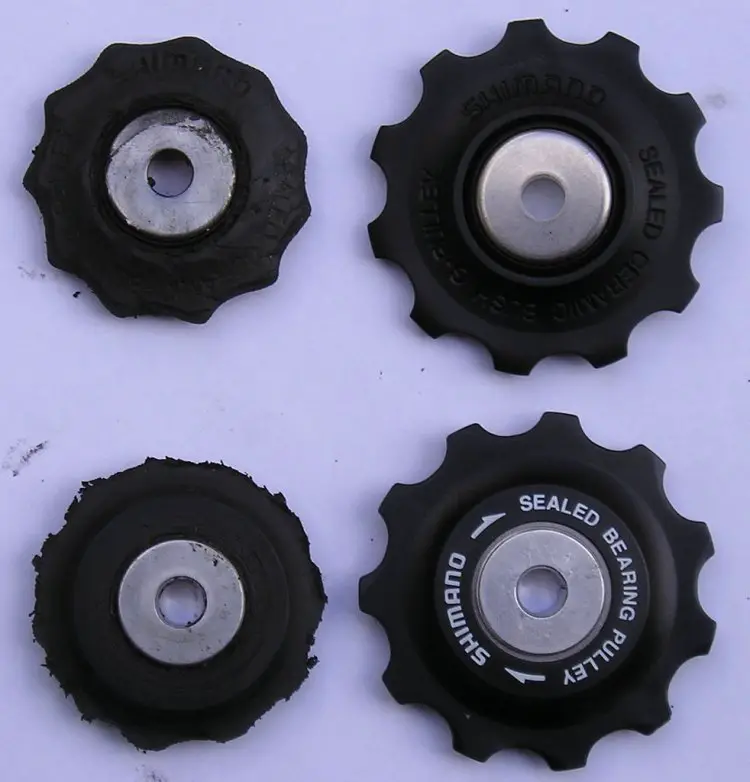
Time for new jockey wheels? Don’t let them wear down as badly as above. Posted on Flickr by Jason Rogers.
The above picture of jockey wheels are well-beyond worn. Another common key indicator of wear is that the teeth will start to become pointed, often described as looking like ninja throwing stars. Worn jockey wheels as bad as the two above, which are designed to retain and guide the chain, will cause chain skipping and the dreaded chain drop.
If pulleys have gotten to this point, the only solution is to replace them. The Global Cycling Network has created a video detailing the process while leaving the chain in place:
However, a rider shouldn’t be taking care of their jockey wheels only when it’s time to replace them. When their teeth are caked with dirty chain lube, or their bearings are seized, the rear derailleur may pull forward and sheer off from your hanger during a warm up.
The derailleur cage is a natural place for debris buildup, so cleaning the wheels with a small brush or a shop rag should be a natural part of the chain cleaning routine.
Much like the bearings in your bottom bracket, just because the bearings in your jockey wheels are sealed, doesn’t mean they are proofed against all kinds of weather. Because jockey wheels can easily outlast multiple chains, overhauling the bearings is a good practice, especially for those who don’t want to spend $16 on a new set several times per season, or those who invested top dollar in jockey wheels with ceramic bearings.
As mentioned in the video on replacing the jockey wheels, the upper and lower wheel are typically different, with different thicknesses and bushing sizes, so one should either make a note of the placement of each wheel or overhaul the jockey wheels one at a time.
After the wheels are off the rear derailleur, remove the cupped washers and bushing, and with sealed bearings, you’ll need to remove the seal with a small flathead. The overhauling process is not the same as most bearing overhauls: Use a degreaser to clean the dirty grease out, let the degreaser dry, but then apply a coat of lubrication to the bearings before covering them with their seal. Although some mechanics use standard waterproof grease here instead, the application should be small as an overkill amount will attract large amounts of dirt.
Like standard maintenance on the rest of the drivetrain, not overlooking these small but vital jockey wheels will ensure that your rear derailleur keeps your ride headache free.













